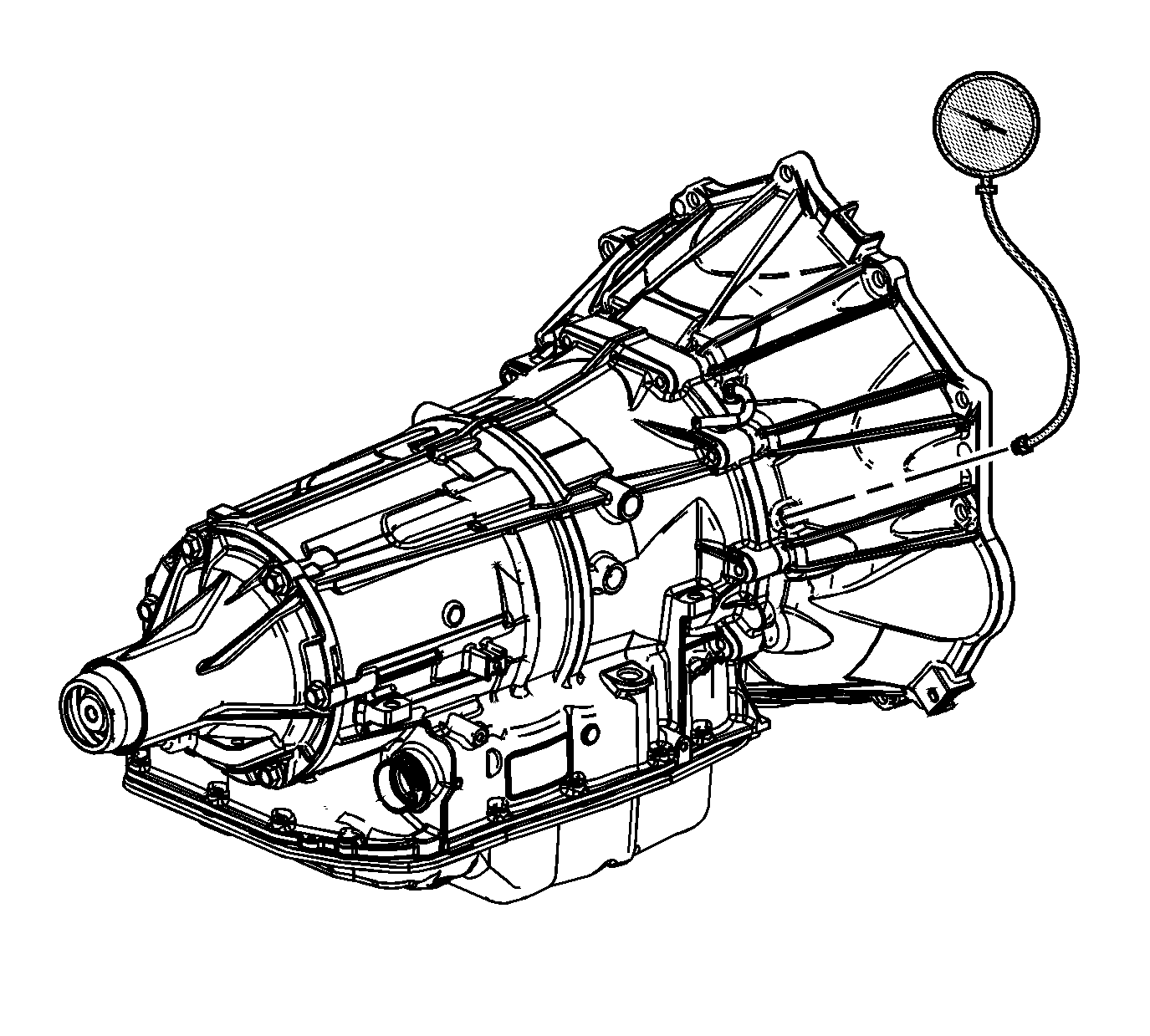
Special Tools
J 21867 Pressure Gage
- Install a scan tool.
- Start the engine.
- Inspect the transmission for the proper fluid level. Refer to Transmission Fluid Check .
- Use the scan tool to inspect for any active or stored diagnostic trouble codes.
- Inspect the manual linkage at the transmission for proper function.
- Turn the engine OFF.
- Remove the line pressure test hole plug.
- Install the J 21867 .
- Access the Scan Tool Transmission Output Controls for the Line PC Solenoid.
- Start the engine.
- Use the scan tool to increase and decrease line pressure, allowing the pressure to stabilize between increments.
- Compare the pressure readings on the gage with the table below.
- If the pressure readings on the gage are erratic, or increment by more than approximately 200-300 Kpa (30-40 psi), refer to Fluid Pressure High or Low .
- Turn the engine OFF.
- Remove the J 21867 .
- Install the line pressure test hole plug.
Caution: Keep the brakes applied at all times in order to prevent unexpected vehicle motion. Personal injury may result if the vehicle moves unexpectedly.
Important: You may need to remove or disconnect components in order to gain access to the transmission line pressure test hole plug.
Important: In order to achieve accurate line pressure readings, the following procedure should be performed at least three times.
The scan tool commands line pressures in increments of approximately 200 Kpa (30 psi). However, these pressure values are not displayed on the scan tool screen. Control the Line PC Solenoid in PARK or NEUTRAL with the engine speed at approximately 1500 RPM and the TFT between 35-55°C (95-131°F). This protects the clutches from extreme high or low line pressures and ensures a consistent pump capacity.Notice: Use the correct fastener in the correct location. Replacement fasteners must be the correct part number for that application. Fasteners requiring replacement or fasteners requiring the use of thread locking compound or sealant are identified in the service procedure. Do not use paints, lubricants, or corrosion inhibitors on fasteners or fastener joint surfaces unless specified. These coatings affect fastener torque and joint clamping force and may damage the fastener. Use the correct tightening sequence and specifications when installing fasteners in order to avoid damage to parts and systems.
Tighten
Tighten the pressure plug to 11 N·m (97 lb in).
Scan tool Line PC Solenoid pressure increment or decrement (increase or decrease one at a time) | Approximate line pressure shown on pressure gage @ 1500 RPM | |
|---|---|---|
Kpa | PSI | |
0 (no increment) | 310-448 | 45-65 |
1 increment | 517-655 | 75-95 |
2 increments | 723-861 | 105-125 |
3 | 930-1068 | 135-155 |
4 | 1137-1275 | 165-185 |
5 | 1344-1482 | 195-215 |
6 | 1551-1689 | 225-245 |
7 | 1758-1896 | 255-270 |
